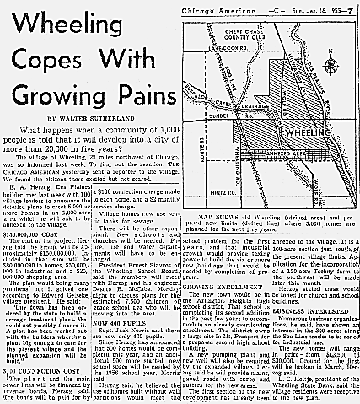History of the Village:
Wheeling Through The Years
TThe soft cover book Wheeling Through the Years
an oral history of Wheeling, an Illinois village contains
over 250 8x11 pages, and is available for purchase through the
Historical Society for $25.00 directly, or by mail with a $5.00
shipping and handling charge.
This book contains chapters on growing up in Old
Wheeling, school days, girl scouts, homesteading, Yankee farmers,
German farmers, Wheeling Train Station, Crane farms, Denoyer farm,
Milwaukee Avenue, Early planes and airports, prohibition, World War
II, Hispanics, organizations, churches, and much more. Illustrated
with photographs from the 1700's through the 1980's. Some
samples are included below.
If you are at all interested in Wheeling's past, we would like very much for you to join us in the preservation of our history and artifacts. If you would like to become an active member of the Wheeling Historical Society, please fill out the online application and mail it to us. and mail it to us.
| LA RAY'S CAFE was among the last occupants of the Fassbender hardware store, established on the southeast corner of Milwaukee and Dundee in 1845. |
 |
 |
DON ROTH'S RESTAURANT, established in Wheeling in 1969, is built around a frame house that John Schminke, early local general store owner, built on N. Milwaukee Ave. in 1880.
Don Roth's closed in 2010. |
| LE FRANCAIS RESTAURANT, with it world class cuisine, was brought to Wheeling by Jean Banchet. It first occupied the Moellers' Restaurant building, but was completely rebuilt when it burned down. The owner's house is on the river. |
 |
REACTION to sudden growth is explored by American reporter.
|
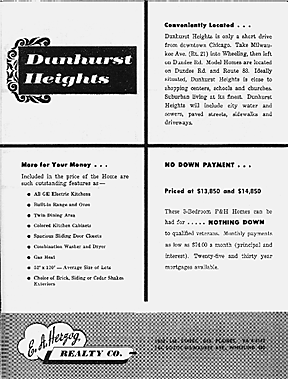 |
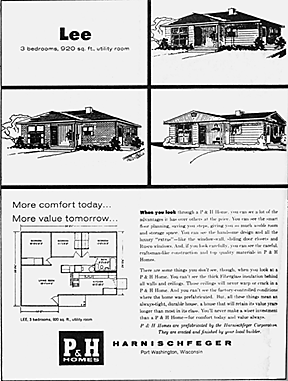 |
|
|
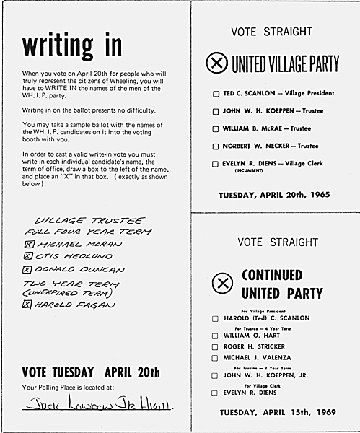 |
WRITE-IN CAMPAIGN was mounted by community activists in 1971.
It failed, but their slate won in the following election. Earlier parties often ran uncontested.
( Click document to expand ) |
| CONGREGATION BETH AM meets in this building at 850 Jenkins Ct. It housed the Indian Trails Public Library until the new library on Schoenbeck Rd. was opened, and originally was the home of St. Mark's United Church of Christ. |
 |
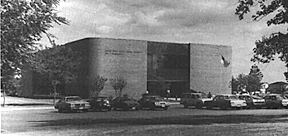 |
INDIAN TRAILS LIBRARY DISTRICT, which serves Wheeling and Buffalo Grove, was formed in 1974 and the ground-breaking for this new library building on Schoenbeck Rd. was in 1979. |
| OUR SAVIOR EVANGELICAL FREE CHURCH began in 1956 with a Bible Study Group that met at Whitman School. In 1964 the congregation was incorporated and called its first pastor. They later moved to Mark Twain School, and this church was built in 1971 and expanded in 1978. |
 |
 |
FIRST VILLAGE HALL passed Dunkin' Donuts on Dundee Rd. as it was moved to Chamber Park. It was built in 1895 at a cost of $553.26, plus $150 for the lot at 84 S. Milwaukee Ave. The Wheeling Historical Society has maintained a museum in the old building since 1966, first renting it from the Village for a fee of $1.00 per year and later under an affiliation agreement with the Wheeling Park District. |
| THE COMMUNITY PRESBYTERIAN CHURCH, which was the spiritual and social center for most of Wheeling from 1865 on, moved from Dundee Rd. into this building on Highland Ave. in 1962. |
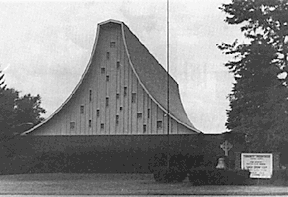 |
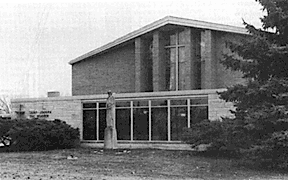 |
ST. JOSEPH THE WORKER CHURCH at 181 Dundee Rd. was opened on Christmas Day in 1958. The parish school followed in 1959. |
| HOUSES SPROUTED UP where cattle grazed and crops once grew. This plan was proposed for Buffalo Creek Farm. Things didn't work out exactly according to plan, yet in 1986 we find that K-Mart, Tom Todd Chevrolet and the Lock Up storage facility occupy the bulk of 39-acre parcel No. 4 which was designated a business area. |
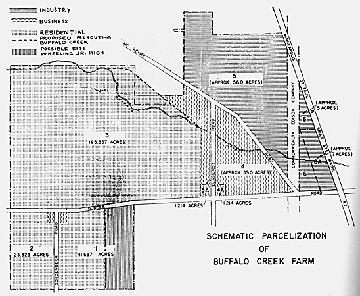 |
 |
WHEELING MUNICIPAL CENTER incorporates Village Hall, which also is used as courtroom, municipal department offices, and the adjoining police department and the fire station. |
| TAX INCREMENT FINANCING is planned for this stretch of Milwaukee Ave. It runs from Manchester Ave. on the south to the Senior Housing Center on the north. Development is beginning with the northwest corner of Dundee and Milwaukee (shaded area) which will become a shopping mall. Parts of it were acquired by the Village toward the end of 1986. |
 |
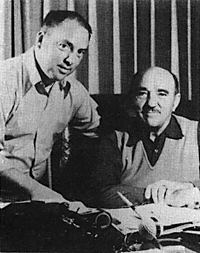 |
THE PRIESTERS, Charles (left) and George, were in the process of selling Pal-Waukee Airport to the villages of Wheeling and Prospect Heights as 1986 drew to a close. |
| TORNADO struck the main hangar at Pal-Waukee and brought a brief setback. Surprisingly, once roof and siding panels were carefully removed, planes were found to be undamaged. |
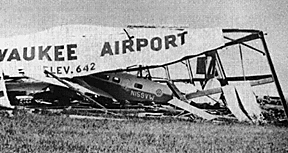 |
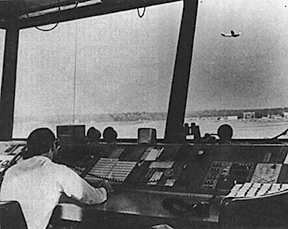 |
CONTROL TOWER at Pal-Waukee was built by George Priester in 1967. Staffed by the Federal Aviation Administration, it marked an important step in the development of the airport. |
| ALLISON'S BRIDGE crossed the Des Plaines River at a point just below where Palatine Rd. is now. It was built by the Allisons to provide easy passage from their house and barns on the east side of the river to the fields and pasture land on the west. Later it became a public thoroughfare. |
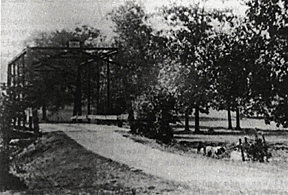 |
|






